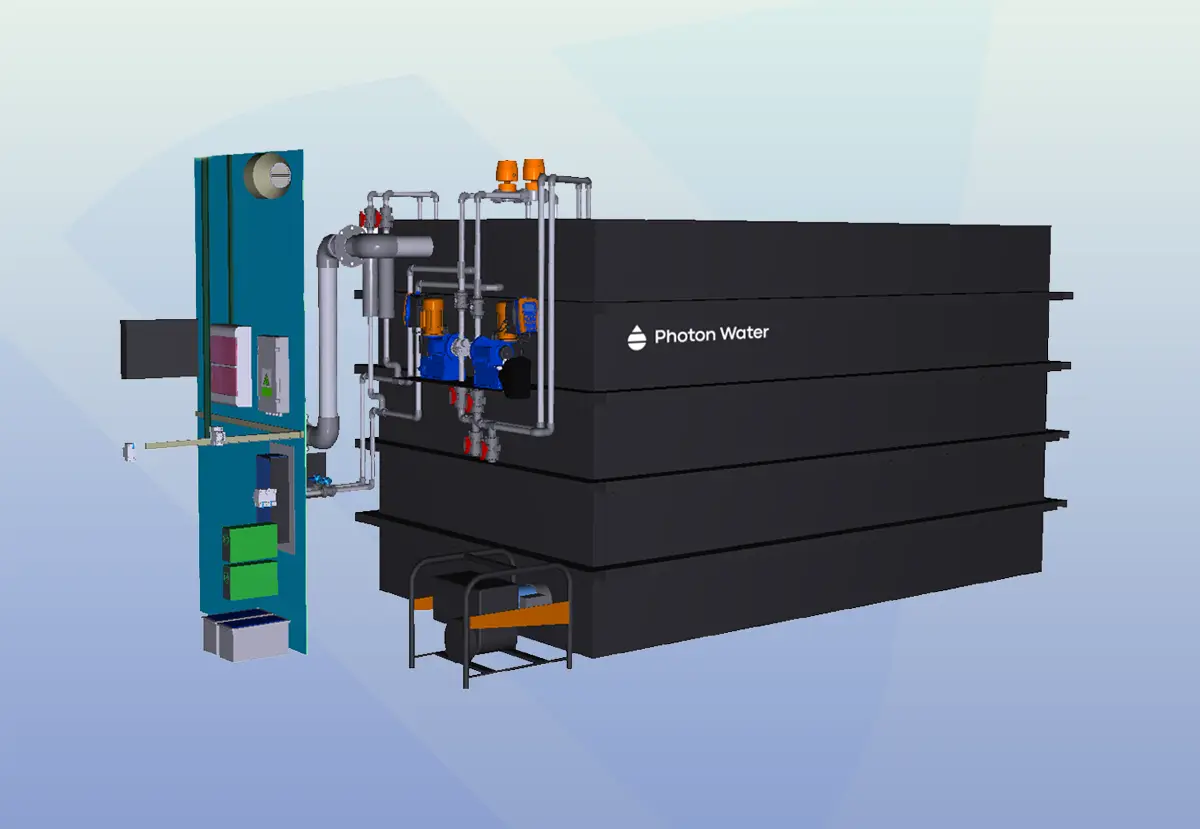Long-term reduction of the nutrient content of the water flowing into the water reservoir.
Phosphorus precipitation is an effective method of reducing the nutrient content of the water column. It is therefore a suitable method of quality care, especially for bathing and ornamental water reservoirs. In some cases, it is advantageous to treat the water already at the inlet to the water reservoir.

Precipitation of phosphorus as an essential nutrient for the development of phytoplankton in stagnant surface waters at the inflow to a water reservoir is based on the same principle as precipitation of phosphorus on a body of water. By dosing the coagulant (precipitant), the dissolved phosphorus and phytoplankton cells are flocculated. This reduces the nutrient load of the reservoir and reduces turbidity (increases the transparency of the water column).
However, the difference is in the app. When precipitating phosphorus at the inlet, very small doses of coagulant are applied by means of a dosing pump into the inflow watercourse. Dosing is carried out over a longer period of time, usually from the spring filling of the tank to the end of the growing season.
An automatic precipitation unit equipped with a coagulant storage tank, a dosing pump, a control unit enabling remote control and probes for continuous monitoring of basic F-CH parameters of the flowing water above and below the outlet of the dosing nozzles (flow rate, pH, temperature, conductivity, dissolved oxygen concentration and ORP).
Ing. Hana Skalova
+420 775 855 608
hana.skalova@photonwater.com
Dimensioning, technological design
Laboratory precipitation tests
Negotiation of an exemption for the application of harmful substances into surface water with the relevant authorities
Delivery and installation of the precipitation unit
Supply of coagulant
Operation of a phosphorus precipitation unit at the inlet
Real-time monitoring and operational monitoring
Jordán - Water Reservoir
"The city of Tábor has long been striving to improve the water quality in Jordán, the oldest dam reservoir in the Czech Republic, which is used for recreation and other purposes and is an important part of our community. In 2022, Photon Water installed a phosphorus precipitation station at Košínský potok and has been operating it in cooperation with the Biological Center of the Czech Academy of Sciences ever since. Cooperation with the people at Photon Water is always helpful and constructive."
Ing. Vladimíra Sedlová
Tábor Municipality
